#\custom on demand app development
Explore tagged Tumblr posts
Text
Top Features to Consider for Your On-Demand Handyman App Development Services

In the modern digital age, convenience is king. People expect services to be available at their fingertips, and the handyman industry is no exception. On-demand handyman apps are transforming how people access repair and maintenance services, making it easier and faster to get help when needed. To ensure the success of your on-demand handyman app, it’s crucial to incorporate key features that enhance user experience, streamline operations, and offer value to both service providers and customers. This blog will explore the top features you should consider for your on-demand handyman app development services.
User-Friendly Interface
Intuitive Design
A user-friendly interface is essential for attracting and retaining users. An intuitive design ensures that users can easily navigate the app without confusion. The layout should be clean, simple, and logically structured to guide users through the process of booking a handyman service.
Easy Registration and Login
Simplify the registration and login process by allowing users to sign up using their email, phone number, or social media accounts. This reduces the barrier to entry and encourages more users to engage with the app.
Comprehensive Service Listings
Detailed Service Descriptions
Provide detailed descriptions of the various services offered, such as plumbing, electrical work, carpentry, and more. Each service listing should include information about the tasks covered, estimated time of completion, and pricing.
Professional Profiles
Allow handymen to create detailed profiles showcasing their skills, experience, and customer reviews. This helps users make informed decisions when choosing a service provider.
Advanced Booking System
Real-Time Availability
Integrate a real-time availability feature that shows users the available time slots for each handyman. This allows users to book services at their convenience and reduces the chances of scheduling conflicts.
Instant Booking and Scheduling
Provide an option for instant booking and scheduling, enabling users to book a handyman immediately or schedule a service for a later date. Flexibility in booking options enhances user satisfaction.
Secure Payment Gateway
Multiple Payment Options
Incorporate a secure payment gateway that supports multiple payment options, including credit/debit cards, digital wallets, and net banking. This ensures that users can pay for services conveniently and securely.
Transparent Pricing
Ensure transparency in pricing by providing detailed cost breakdowns for each service. This helps build trust with users and reduces the chances of disputes over service charges.
GPS Tracking and Navigation
Real-Time Tracking
Enable real-time GPS tracking to allow users to track the handyman’s location and estimated arrival time. This feature enhances the user experience by providing transparency and reducing uncertainty.
Route Optimization
Implement route optimization algorithms to help handymen reach their destinations efficiently. This reduces travel time and ensures timely service delivery.
In-App Communication
Chat and Call Features
Facilitate seamless communication between users and handymen through in-app chat and call features. This allows users to discuss service requirements, provide additional instructions, and address any concerns directly with the service provider.
Notifications and Alerts
Send real-time notifications and alerts to keep users informed about their booking status, handyman arrival, and any changes to the service schedule. This ensures that users are always updated and reduces the chances of missed appointments.
Ratings and Reviews
Customer Feedback System
Incorporate a customer feedback system that allows users to rate and review the handymen after each service. This provides valuable insights for both the service providers and other users, helping maintain high service quality.
Handyman Ratings
Display handyman ratings prominently on their profiles to help users make informed decisions. High ratings and positive reviews can enhance the credibility of the service providers and attract more bookings.
Robust Backend and Admin Panel
Admin Dashboard
Develop a robust admin panel with a comprehensive dashboard that provides real-time insights into the app’s performance, user activity, and service requests. This helps the app administrators manage operations efficiently.
Analytics and Reporting
Integrate advanced analytics and reporting tools to track key metrics such as user engagement, service demand, and revenue. This data-driven approach helps in making informed business decisions and optimizing the app’s performance.
Safety and Security
Background Checks
Ensure the safety and security of users by conducting thorough background checks on all handymen. This includes verifying their identity, qualifications, and work history to maintain a trustworthy service.
Secure Data Handling
Implement robust data security measures to protect user information and payment details. Compliance with data protection regulations is crucial to building trust with users and avoiding legal issues.
Customer Support
24/7 Customer Support
Offer 24/7 customer support to address any issues or concerns users may have. A responsive customer support team can enhance user satisfaction and build loyalty.
Help Center and FAQs
Create a comprehensive help center and FAQ section within the app to provide users with quick answers to common questions and troubleshooting tips. This reduces the need for direct customer support and empowers users to resolve minor issues independently.
Marketing and Promotions
Loyalty Programs
Introduce loyalty programs and reward schemes to incentivize repeat bookings. Offering discounts, cashback, or points for each booking can encourage users to choose your app for their handyman needs.
Referral Programs
Implement referral programs that reward users for referring new customers to the app. Word-of-mouth marketing can significantly boost your user base and increase app downloads.
Conclusion
Developing a successful on-demand handyman app requires careful planning and the incorporation of essential features that enhance user experience, streamline On-Demand Mobile Applications, and ensure service quality. By focusing on user-friendly design, comprehensive service listings, advanced booking systems, secure payment gateways, and robust backend support, you can create a handyman app that stands out in the competitive market. Additionally, implementing safety measures, offering excellent customer support, and leveraging marketing strategies can further boost the app’s success and build long-term customer loyalty.
Investing in on-demand handyman app development services can transform the way home maintenance and repair services are accessed, providing convenience and efficiency for both service providers and users. By considering the features and strategies outlined in this blog, you can create a top-notch handyman app that meets the evolving needs of modern consumers and achieves sustained success in the market.
#On-Demand App Development Services#On Demand App Development Company#On-Demand App Development#On Demand App Development Solutions#On-Demand Mobile Applications#Custom on Demand App Development#On-Demand App#Apps On Demand
0 notes
Text
0 notes
Text
Supreme Custom On-Demand App Development Company in USA | BCoder Castle
For the overall expansion of your organization, get on-demand app development services. We are a custom on-demand app development Company that specializes in Creating on-demand apps and services to meet the unique needs of businesses across various on-demand verticals. So without wasting any further moments book your session with our expert today!

#custom delivery app#fitness app developer#app developers new york#web design and development company in usa#aws devops professional#e learning app development company#on-demand app developers#blockchain developers#health app developer#software app developer#custom on-demand app development#custom on demand app development
0 notes
Text
#Blinkit app development#Swiggy Instamart app development#Zepto app development services#Grocery delivery app development#On-demand delivery app development#Custom Blinkit-like app solutions#Zepto clone app development#Swiggy Instamart clone development
0 notes
Text
AI Agents in Real Estate – Shaping the Future
AI development service
AI/ML development solutions
Chatbot development company
AI agent development service
Mobile app development service
#AI development service#ai in agriculture#ai in farming#ai/ml#artificial intelligence#AI/ML solutions#custom app developmennt service#on demand development solutions#custom software development#mobile app development service#mobile app development company#hire dedicated developers#hire saas developer#app development company#android app development#ios app development services#ios app development trends#app developing company#hire saas developers
1 note
·
View note
Text
Want to Build an eCommerce App like The Home Depot? Explore Features & Costs!
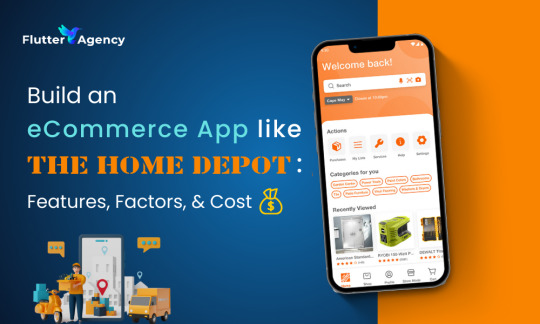
Apps revolutionize home improvements. Homeowners now tap screens for repairs, materials, and DIY guidance. On-demand services surge, connecting residents with pros instantly. Digital platforms streamline projects, from minor fixes to major renovations. This tech-driven shift transforms how we maintain and upgrade our living spaces.
A rising market beckons innovators. Developers now face a prime chance to build an all-encompassing platform—a digital Home Depot for the tech world. This one-stop solution could revolutionize how we access and integrate diverse technologies.
Building an app similar to Home Depot can be highly profitable.
From renovation inspiration to expert guidance, your app transforms home improvement. Users instantly access a vast product selection, professional advice, and essential services. It’s the all-in-one solution for DIY enthusiasts and homeowners alike, delivering tools, ideas, and assistance with a tap. This digital hub streamlines projects, making home enhancement effortless and accessible.
Step-by-Step Process to Build an On-Demand Home Service App like Home Depot
Step 1: First, pinpoint your audience. Homeowners seeking repairs? Contractors hunting supplies? DIY enthusiasts planning projects? Know their needs. Then, dive deep into market research. This crucial step shapes your app’s features. Don’t rush development. Instead, invest time in understanding your users. Their desires will guide your creation, leading to a product that resonates with a profound impact. Remember, thorough preparation paves the way for success in the competitive app landscape.
Analyze Home Depot, Lowe’s, and TaskRabbit’s platforms to identify market openings. Learn from their strengths and sidestep their flaws. Tailor your app with unique features through custom development. By filling gaps and surpassing user needs, your product will stand out in a crowded field, securing its own distinctive space in the market.
Feature List
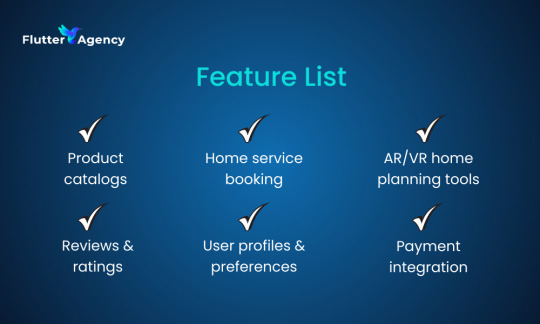
Product catalogs: From power tools to plumbing fixtures, our store stocks everything for your home projects. Browse aisles filled with quality building materials and essential hardware. Find the perfect items to renovate, repair, or upgrade any space in your house.
On-demand booking for home services: Book skilled pros for plumbing, painting, electrical jobs, and beyond. Our platform connects you with vetted experts, making home services hassle-free.
AR/VR tools for home planning (optional): Visualize renovations virtually before committing. This tool lets homeowners preview improvements, aiding confident decisions on home upgrades. See your space transformed digitally, ensuring satisfaction before investing time and money.
User profiles and preferences: Store user preferences and purchase history to tailor their experience. This personal touch enhances engagement and satisfaction.
Payment gateways: Ensure secure and seamless transactions through various payment options.
Customer reviews and ratings: Let users share and explore honest feedback. Reviews build confidence in products and services while fostering community trust.
Custom-built features elevate your app, transforming it into a home improvement must-have. Your platform transforms into an irresistible renovation powerhouse, fueled by top-tier development expertise. Users flock to this ultimate solution, revolutionizing their projects with ease and efficiency.
Step 2: Define the Core Features of the App
A stellar home service app mirrors Home Depot’s core strengths. It seamlessly guides users through tasks, enhancing their experience at every turn. Key elements include intuitive navigation, robust search functions, and detailed product catalogs.
These features, working in harmony, create an efficient, user-centric digital ecosystem for home improvement needs.
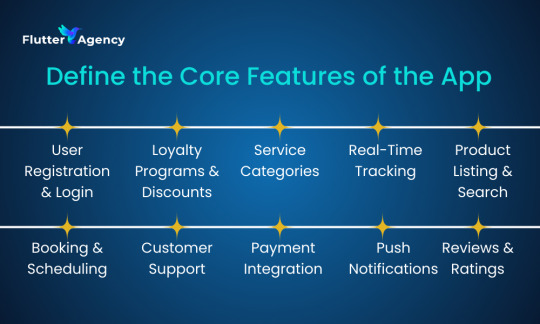
User Registration & Authentication: Social, email, or phone signups streamline user access. Quick logins enable effortless account creation and smooth entry to the platform.
Service Categories: Group services by type: electrical, plumbing, HVAC, and beyond. This streamlined approach helps users quickly locate their desired assistance.
Product Listing & Search Functionality: Users can quickly locate ideal products through our expansive database. Intuitive search filters for price, ratings, and relevance streamline the shopping experience, ensuring efficient and satisfying item discovery.
Booking & Scheduling: Book services and appointments effortlessly with our user-friendly system. Seamlessly integrated calendars streamline scheduling, ensuring maximum convenience for all users. This intuitive platform simplifies the entire booking process, saving time and reducing hassle.
Real-Time Tracking: Track deliveries and services in real-time. Keep users informed every step of the way. Instant updates ensure peace of mind and build trust.
Payment Gateway: Safeguard transactions with diverse payment methods. Accept credit cards, mobile wallets, and PayPal to ensure smooth, secure processing for all customers.
Reviews & Ratings: Feedback fuels progress. Ratings build credibility. By embracing user input, custom app development services evolve. Unlock these tools to elevate quality and earn trust. Continuous improvement thrives on customer voices.
Push Notifications: Keep users hooked with quick pings. Flash enticing deals, track shipments, and nudge about services. Timely notifications foster engagement and spark action.
Customer Support: Chatbots and live agents offer seamless support access. Integrate these tools directly into your platform for swift user assistance. This user-friendly approach enhances satisfaction and resolves issues efficiently.
Loyalty Programs & Discounts: Incentivize loyal patrons through exclusive deals, price cuts, and reward points, fostering return visits and sustained engagement.
For a polished cross-platform solution, consider enlisting Flutter experts. Skilled developers transform app features into captivating experiences, delighting users with seamless interactions across all devices.
Step 3: Design the User Interface (UI/UX)
Crafting a smooth, captivating interface is key to an app’s triumph. For Home Depot’s digital platform, this means seamlessly blending services and products into a user-friendly design that hooks customers and drives success. Here’s how to approach the design phase:
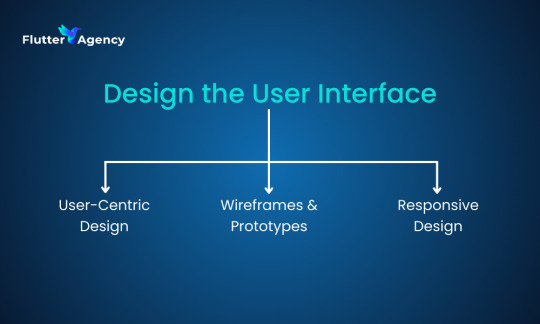
User-Centric Design: Simplicity guides our app’s design. Users navigate swiftly to products, services, and expert advice. Intuitive interfaces ensure effortless exploration for all. Newcomers and veterans alike find efficiency at their fingertips. The digital landscape unfolds seamlessly, prioritizing ease of use. User-friendly elements reign supreme, creating a fluid experience throughout.
Wireframes & Prototypes: Map key user flows with wireframes. Visualize the home screen, product search, and service booking. Prototypes reveal the user’s path, highlighting crucial features. This approach ensures easy access to essential elements throughout the journey.
Responsive Design: From smartphones to desktops, our app adapts seamlessly. It delivers a uniform experience across devices, adjusting to various screen sizes with precision. Users enjoy flawless functionality whether they’re swiping on tablets or clicking on laptops. This versatility ensures everyone can access and navigate the app effortlessly, regardless of their preferred platform.
A sleek, intuitive interface rivals industry giants, drawing users in and keeping them engaged. Your app’s seamless design becomes its competitive edge, fostering customer loyalty and market share growth.
Also Read: How? Develop On-Demand Delivery App For Your Business
Step 4: Develop the App (Front-End & Back-End)
With the design in place, we can now move on to developing the app. Here’s a breakdown of key steps:

Choose a Development Platform: It’s a crucial choice for e-commerce mobile app development. iOS and Android offer platform-specific advantages, while frameworks like Flutter and React Native promise efficiency. With a single codebase, Flutter streamlines development for both platforms, potentially saving time and resources. Weigh your options carefully to align with project goals and team expertise.
Front-End Development: Craft sleek, dynamic interfaces mirroring your wireframes. Polish UI components for swift performance and frictionless user interactions. Prioritize responsiveness and seamless functionality to elevate the overall experience.
Back-End Development: Here’s where the app’s core functionality takes shape. Set up servers, databases, and APIs to power its key features, including:
Service catalog management: Compile and adjust information about services, products, and divisions.
User data storage: Safeguard personal data, preferences, and booking history.
Payment processing: Implement secure payment gateways for transactions.
Admin Dashboard: Develop an admin panel that allows the app’s managers to handle user data, services, orders, payments, and customer support. This helps streamline backend operations and ensures smooth management.
Third-Party Integrations: Integrate external APIs to enhance functionality. These may include:
Geolocation for tracking deliveries and services.
Transaction handling for safe, smooth exchanges.
SMS notifications for timely alerts on service bookings, delivery updates, and promotions.
Merge elegant interface design with powerful server-side capabilities to create an app that flows effortlessly. Hire Flutter mobile app developers, particularly those versed in Flutter, to construct a durable, expandable system. Aim for the polished performance of Home Depot’s app, ensuring user delight and room for future expansion. This strategy paves the way for sustained success and happy customers.
Step 5: Testing & Quality Assurance
Rigorous testing safeguards your app’s quality. Prioritize thorough quality assurance to guarantee users a seamless experience before release. Here’s how to approach it:
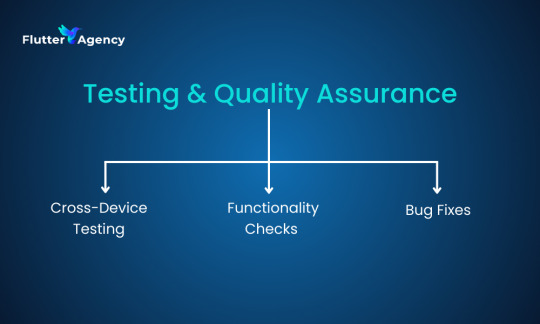
Test Across Devices: From iPhones to Androids, tablets to phones, our app must shine on every screen. We’ll rigorously test across devices, ensuring smooth operation and visual harmony. No matter the OS or display size, users deserve a flawless, unified experience.
Functionality Testing: Rigorously examine the app’s key functions: appointments, transactions, item lookup, and user data handling. Verify seamless operation across all systems. Test thoroughly to catch any bugs or hiccups. Ensure a smooth user experience from start to finish.
Bug Fixes: Bugs uncovered in testing demand swift fixes. Post-launch, attentiveness to user input drives ongoing app refinement. These efforts ensure seamless operation and satisfied users. Vigilance in both phases – pre and post-release – is key to app success.
Step 6: Launch & Marketing
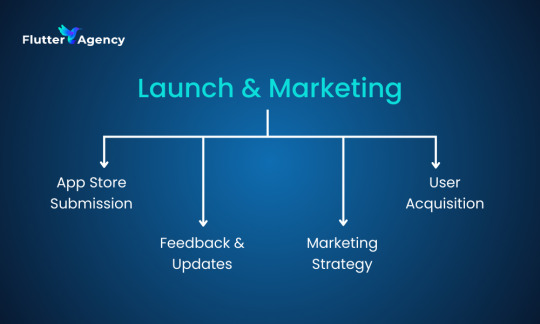
App Store Submission: Launch your app on the Google Play Store and Apple App Store. Follow each platform’s guidelines to avoid delays.
Marketing Strategy: Engage users through a diverse app marketing approach. Start by harnessing social media’s vast audience. Next, forge partnerships with influential voices in your niche. Finally, launch precision-targeted Google Ads campaigns. This three-step approach maximizes visibility, credibility, and user acquisition for your app.
User Acquisition: Create buzz and encourage downloads. Offer discounts to early users. Consider referral programs to help expand your user base.
Feedback and Updates: Regularly collect user feedback to enhance the app. Also, update it often with new features and fixes to keep users engaged and loyal.
By testing and marketing your app, it will work as intended. It will also gain traction in a competitive market.
Cost of Developing an On-Demand Home Service App Like Home Depot

Design Phase
UI/UX Design: $5,000 – $15,000
Wireframing & Prototyping: $2,000 – $5,000
Development Phase
Front-End Development: $15,000 – $40,000
Back-End Development: $20,000 – $60,000
Admin Dashboard: $5,000 – $15,000
API Integrations: $3,000 – $10,000
Testing and QA
Testing: $5,000 – $15,000
Bug Fixes: $2,000 – $7,000
Launch and Post-Launch Maintenance
Marketing & Promotion: $10,000 – $30,000
App Store Submission: $1,000 – $2,000
Maintenance (annually): $10,000 – $30,000
Estimated Total Development Cost: $70,000 – $200,000 (depending on complexity and features)
Final Thoughts
Creating a home service app taps into the growing need for easy home improvements. Similar to Home Depot, you can offer products, services, and expert advice. This approach will attract homeowners, contractors, and DIY fans. Moreover, you can earn money through product sales, service bookings, and ads. This means your growth potential is significant.
Working with custom app developers lets you create apps that meet user needs. This gives you a competitive edge in the growing market. The home improvement sector is growing. Now is the best time to invest in a simple, strong app.
#Build eCommerce App Like The Home Depot#Build The Home Depot Clone App#Custom App Development Services#The Home Depot App Development Cost#Home Service App Development Cost#On-Demand Home Service App#Features of Home Service App#eCommerce App Development Company
0 notes
Text
Extend Your Food Delivery Business with food ordering and delivery application
Partner with Tecnolynx to launch your own meal delivery service, connecting food enthusiasts with their favorite local restaurants. We offer a complete suite of on-demand food delivery mobile app solutions, tailored for users worldwide. At Tecnolynx, we specialize in designing food delivery applications that are visually appealing and user-friendly, ensuring a seamless and efficient food ordering experience for your customers. Boost your restaurant's ROI with a white-label food ordering app, customized to empower your target audience to effortlessly order from nearby restaurants with just a few taps.
#On-demand food delivery#Food delivery app development#Restaurant delivery app#Food ordering app#Delivery service app#On-demand app development#Mobile app development#Custom app solutions#App development company#Contact for more information
0 notes
Text
Maximizing Growth with OpenTeQ NetSuite B2C Portals for E-commerce Businesses
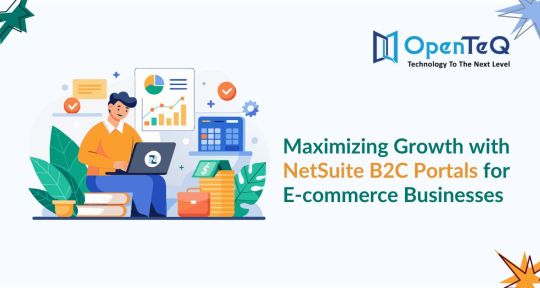
Success in the fiercely competitive world of e-commerce depends on effective management of client relations, operations, and data flow. Businesses want reliable solutions to improve client experiences and manage operations as they grow. For e-commerce companies, NetSuite integration provides a complete solution that can optimize everything from customer interaction to inventory management. Leading NetSuite solution provider OpenTeQ is committed to assisting e-commerce businesses in utilizing this effective technology to achieve long-term success.
The Role of NetSuite in E-commerce
NetSuite's comprehensive suite of solutions empowers e-commerce businesses to centralize operations, improve customer service, and gain valuable insights through advanced analytics. With tools that automate and simplify everything from order management to financial tracking, NetSuite is the perfect fit for fast-growing e-commerce companies.
One essential element is the NetSuite Customer Portal, which enables businesses to offer customers real-time access to order history account information, and support services. OpenTeQ specializes in setting up and customizing NetSuite Customer Portals, ensuring that customers enjoy a seamless experience while reducing the burden on support teams.
Expanding Global Reach with NetSuite Offshore Partner
In the globalized e-commerce market, working with the right technology partner is critical. OpenTeQ acts as a trusted NetSuite Offshore Partner, helping e-commerce businesses expand their reach and improve operational efficiency. Through its offshore services, OpenTeQ supports businesses with customized NetSuite implementations, ensuring smooth global operations and continuous optimization.
OpenTeQ’s offshore team also helps businesses scale faster by providing expert NetSuite development and support, all while keeping costs manageable. This collaboration allows businesses to focus on growing their core operations while leaving the technical aspects to a trusted NetSuite Offshore Partner.
Enhancing Customer Experience with NetSuite B2C Portals
One of the biggest challenges e-commerce businesses faces is providing a seamless and personalized shopping experience. NetSuite B2C Portals offer a solution to this by allowing companies to create customized shopping experiences for their customers. With personalized interfaces, businesses can offer product recommendations, streamlined checkout processes, and a cohesive brand experience.
OpenTeQ assists e-commerce companies in implementing and customizing NetSuite B2C Portals to enhance customer engagement and increase conversion rates. By offering real-time product updates, stock availability, and order tracking, these portals give customers the information they need to make purchasing decisions while maintaining a strong connection with the brand.
Streamlining Data Management with NetSuite Data Migration
For any e-commerce business, data is a critical asset. Ensuring that data from multiple platforms is seamlessly transferred and integrated into a central system is key to maintaining operational efficiency. NetSuite Data Migration plays a pivotal role in this process by ensuring smooth transition and consolidation of data from legacy systems to the NetSuite platform.
OpenTeQ's expert team specializes in managing NetSuite Data Migration for e-commerce businesses. Whether a company is migrating product catalogs, customer data, or historical transaction records, OpenTeQ ensures that the data migration process is seamless, accurate, and secure. This migration helps businesses avoid potential disruptions and maintain full control over their data, enabling them to make better-informed decisions and grow their operations effectively.
Conclusion
The integration of NetSuite into e-commerce operations is a game-changer for businesses looking to scale and optimize their processes. With the expertise of OpenTeQ as a NetSuite Offshore Partner, e-commerce businesses can leverage the full power of tools like the NetSuite Customer Portal, NetSuite B2C Portals, and smooth NetSuite Data Migration to streamline operations and enhance customer satisfaction.
Whether your goal is to improve customer engagement, manage global operations, or optimize your data handling, NetSuite integration for e-commerce businesses offers a reliable and scalable solution. OpenTeQ is here to ensure that your e-commerce business achieves long-term success through strategic NetSuite implementations tailored to your needs. Contact Us: [email protected], +1-469 623 5106.
#NetSuite for Construction#NetSuite Solutions for Construction#NetSuite for Private Equity Firms#NetSuite Solutions for Private Equity Firms#NetSuite for hospitality#NetSuite solutions for hospitality management#NetSuite solutions for hospitality industry#NetSuite for Oil & gas Companies#NetSuite Bookkeeping Services#CPA On-Demand#Fractional CFO Services#NetSuite Mobile Apps#NetSuite Mobile App Development#NetSuite Mobile App Services#NetSuite Application Development#NetSuite Mobile Applications#NetSuite Advanced Dunning Solution#Advanced NetSuite Dunning Module#NetSuite Bulk Upload#Payment Orchestration for NetSuite#NetSuite Connectors#NetSuite Revision Management#NetSuite Advanced MRO#NetSuite Advanced Reconciliation#NetSuite RECONATOR#NetSuite for Small Business#Best NetSuite Consultants#NetSuite Managed Services#NetSuite Offshore Partner#NetSuite Customer Portal
1 note
·
View note
Text
Grocery App Development can significantly enhance user experience, increase engagement, and boost sales. Here are five creative ways to achieve this. Personalized Recommendations and Shopping Lists,Augmented Reality (AR) for Product Information,Smart Inventory Management and Real-Time Stock Updates,Seamless Integration with Smart Home Devices,Sustainable and Eco-Friendly Options.
#grocery app development#grocery app development company#grocery delivery app development company#grocery app development services#grocery app development cost#grocery app development solutions#grocery app development agency#grocery app developer#grocery ordering app development#grocery mobile app development#grocery shopping app development#supermarket app development#grocery store app development#grocery delivery app development#on demand grocery app development#online grocery app development#cost of grocery app development#on demand grocery app development services#trusted grocery app development company#custom grocery app development
0 notes
Text
The Gig Economy of Knowledge: Building On-Demand Tutor Apps for Flexible Learning & Earning

The gig economy has revolutionized various sectors, offering unparalleled flexibility and opportunities for both service providers and consumers. One of the most promising areas benefiting from this shift is the education sector, specifically through on-demand tutor apps. These apps are not only transforming the way students learn but also providing tutors with flexible earning opportunities. In this article, we will delve into the numerous advantages of on demand tutor app development, highlighting their impact on flexible learning and earning.
Flexible Learning Opportunities
Personalized Learning Experiences
On-demand tutor apps facilitate personalized learning experiences, catering to the unique needs and learning paces of individual students. These apps allow students to select tutors based on their specific requirements, such as subject expertise, teaching style, and availability. This customization enhances the overall learning experience, ensuring that students receive the attention and support they need to excel.
Convenient Scheduling
One of the significant benefits of on-demand tutor apps is convenient scheduling. Students can book sessions at times that suit their busy schedules, eliminating the constraints of traditional classroom settings. This flexibility is particularly beneficial for students balancing school, extracurricular activities, and other commitments.
Access to a Diverse Pool of Tutors
On-demand tutor apps provide access to a diverse pool of tutors from various geographic locations and educational backgrounds. This diversity enriches the learning experience, offering students exposure to different teaching methodologies and perspectives. It also allows students to find the best match for their learning needs, regardless of their location.
Empowering Tutors with Flexible Earning
Control Over Work Schedule
For tutors, on-demand tutor apps offer the ability to control their work schedules. Tutors can choose when and how often they want to work, making it easier to balance teaching with other personal and professional commitments. This flexibility is a significant advantage, particularly for individuals seeking part-time work or supplemental income.
Expanded Client Base
On-demand tutor apps enable tutors to reach a broader client base. Instead of relying solely on local students, tutors can connect with learners from different regions and even countries. This expanded reach increases their earning potential and allows them to build a more robust tutoring business.
Setting Competitive Rates
Tutors using on-demand apps have the autonomy to set their own rates, allowing them to price their services competitively based on their qualifications, experience, and market demand. This control over pricing empowers tutors to maximize their earnings while providing valuable services to students.
Technological Advancements Enhancing Learning and Teaching
Interactive Learning Tools
Modern on-demand tutor apps come equipped with interactive learning tools such as virtual whiteboards, video conferencing, and real-time collaboration features. These tools enhance the tutoring experience, making it more engaging and effective. They also enable tutors to provide high-quality instruction, regardless of physical distance.
Performance Tracking and Feedback
Performance tracking and feedback mechanisms integrated into tutor apps provide valuable insights into students' progress. Tutors can monitor their students' performance, identify areas for improvement, and tailor their teaching strategies accordingly. This data-driven approach ensures continuous improvement and better learning outcomes.
Resource Accessibility
On-demand tutor apps often include vast libraries of educational resources such as e-books, practice tests, and instructional videos. These resources support the learning process, providing students with additional materials to reinforce their understanding and practice outside of tutoring sessions.
Challenges and Solutions in Developing On-Demand Tutor Apps
Ensuring Quality and Credibility
One of the primary challenges in developing on-demand tutor apps is ensuring the quality and credibility of the tutors. Implementing a thorough vetting process, including background checks, qualification verification, and user reviews, can help maintain high standards and build trust among users.
Data Security and Privacy
Data security and privacy are critical concerns in the digital age. On-demand tutor apps must implement robust security measures to protect users' personal information and comply with relevant data protection regulations. Ensuring secure payment gateways and encrypted communication channels is essential for safeguarding user data.
User Engagement and Retention
Keeping users engaged and retaining them over time is another challenge. Offering incentives such as loyalty programs, referral bonuses, and regular updates with new features can help maintain user interest and encourage long-term use of the app.
Conclusion
The gig economy of knowledge, driven by on-demand tutor apps, is reshaping the landscape of education. These apps offer flexible learning opportunities for students and empower tutors with control over their schedules and earnings. By leveraging technological advancements and addressing challenges such as quality assurance and data security, on-demand tutor apps can continue to thrive, providing valuable educational services in an increasingly digital world.
#On Demand Tutor App Development#On-Demand App Development#Custom on Demand App Development#On-Demand App#Apps On Demand#App Development Company
0 notes
Text
Best Ai Platforms Development Services in the USA | BCoder Castle
Searching for the top American AI platform development services? Look no further than our skilled team of developers, who are committed to offering you excellent solutions crafted to satisfy your unique company requirements. Our services for developing AI platforms are the ideal choice if you want to increase consumer interaction, optimize internal processes, or simplify your overall business plan. Why then wait? Get in touch with us right now for the best AI platform development services in the USA to help you grow your company.

#software app developer#app developers new york#aws mobile app development#web 3.0 development company#e learning web development#elearning app developers#custom on demand app development#on demand app development#nft marketplace app development
0 notes
Text
TaskRabbit Clone: On-Demand Service
Instant Access: One of the primary features of on-demand services is instant access to goods or services. Users can request what they need through a digital platform (such as a website or mobile app) and receive it almost immediately or at a scheduled time that suits them.
User-Friendly Interface: On-demand service platforms typically have user-friendly interfaces that make it easy for customers to navigate, search for services, and place orders efficiently. Intuitive design and clear instructions enhance the overall user experience.
Customization and Personalization: Many on-demand services offer customization options, allowing users to tailor their orders according to their preferences. This could include selecting specific features, options, or preferences related to the service being provided.
Geolocation and Tracking: On-demand services often utilize geolocation technology to match users with nearby service providers or delivery agents. Additionally, real-time tracking features enable users to monitor the progress of their orders, from confirmation to delivery.
Rating and Review System: To maintain service quality and build trust among users, on-demand platforms typically include rating and review systems. Users can rate their experiences and leave feedback, which helps other users make informed decisions and encourages service providers to maintain high standards.
Payment Integration: Seamless payment integration is a crucial feature of on-demand services. Users should be able to securely pay for the services they receive directly through the platform using various payment methods, such as credit/debit cards, mobile wallets, or digital payment systems.
Dynamic Pricing: Some on-demand services implement dynamic pricing models, where prices fluctuate based on factors such as demand, supply, time of day, or distance. This flexibility allows service providers to optimize their pricing strategies while providing users with transparent pricing information.
Multiple Service Categories: On-demand platforms often offer a wide range of services across multiple categories, catering to diverse user needs. Common categories include transportation (ride-hailing), food delivery, grocery delivery, household services, beauty and wellness, and more.
Service Provider Network: A robust network of service providers is essential for the success of on-demand platforms. These service providers may be independent contractors or businesses that partner with the platform to fulfill user requests promptly and efficiently.
24/7 Availability: Many on-demand services operate round-the-clock, providing users with access to goods or services whenever they need them. This availability adds to the convenience factor and accommodates users with varying schedules and preferences.
Regulatory Compliance and Safety Measures: On-demand service platforms must adhere to relevant regulations and implement safety measures to protect both users and service providers. This may include background checks for service providers, insurance coverage, compliance with local laws, and data protection measures.
Customer Support: Effective customer support is essential for addressing user inquiries, resolving issues, and providing assistance throughout the service journey. On-demand platforms typically offer multiple channels for customer support, such as chat support, helplines, or email assistance.
Scheduling and Booking: Many on-demand platforms offer scheduling and booking features, allowing users to plan and reserve services in advance. This functionality is particularly useful for services like appointments, reservations, or deliveries that need to be scheduled for a specific date and time.
Multi-platform Accessibility: To reach a broader audience, on-demand service platforms often provide accessibility across multiple devices and platforms. Users can access the service through mobile apps, websites, or even dedicated interfaces for smart devices like smart speakers or wearables.
Subscription and Membership Options: Some on-demand services offer subscription or membership options, providing users with access to exclusive benefits, discounts, or perks in exchange for a recurring fee. These subscription models enhance user loyalty and encourage repeat usage.
Reliability and Trustworthiness: A renowned company's on-demand service app is likely to have a reputation for reliability and trustworthiness. Users can have confidence that the services offered meet high standards in terms of quality, safety, and reliability.
Robust Infrastructure and Technology: Renowned companies typically invest heavily in developing robust infrastructure and cutting-edge technology for their apps. This results in a seamless and efficient user experience, with features such as real-time tracking, advanced security measures, and optimized performance.
Wide Range of Services: On-demand service apps from renowned companies often offer a comprehensive range of services across various categories, catering to diverse user needs. Whether it's transportation, food delivery, household services, or wellness offerings, users can find everything they need within a single platform.
Exceptional User Interface and Experience: Renowned companies prioritize user experience design, resulting in intuitive interfaces and smooth navigation. From the onboarding process to placing orders and tracking deliveries, every step is designed to be user-friendly and hassle-free.
High-Quality Service Providers: Renowned companies typically have strict criteria for selecting service providers, ensuring that only qualified and experienced professionals are onboarded. Users can expect to receive services from skilled and vetted individuals or businesses, enhancing the overall service quality.
Responsive Customer Support: Renowned companies understand the importance of excellent customer support and invest in dedicated support teams to assist users promptly and effectively. Whether it's resolving issues, addressing inquiries, or providing assistance, users can rely on responsive customer support channels.
Transparent Pricing and Policies: On-demand service apps from renowned companies often have transparent pricing structures and clear policies regarding fees, charges, and terms of service. Users can make informed decisions and understand the costs associated with the services they're using.
Innovative Features and Constant Updates: Renowned companies continuously innovate and introduce new features and enhancements to their on-demand service apps. This ensures that users benefit from the latest technologies, trends, and improvements, enhancing their overall experience over time.
Integration with Other Services and Platforms: On-demand service apps from renowned companies may integrate with other popular services and platforms, offering added convenience and functionality. For example, integration with payment gateways, mapping services, or loyalty programs can enrich the user experience.
Commitment to Safety and Compliance: Renowned companies prioritize safety and compliance with relevant regulations and standards. They implement robust safety measures, conduct background checks on service providers, and adhere to legal requirements, ensuring the safety and security of users and their transactions.
Community Engagement and Social Responsibility: Many renowned companies are committed to corporate social responsibility and actively engage with their communities. Users who choose their on-demand service apps can feel good knowing that they're supporting a company that gives back and contributes to positive social impact initiatives.
Accessibility Features for Diverse Audiences: Renowned companies recognize the importance of accessibility and inclusion, incorporating features to accommodate users with disabilities or specific needs. This could include options for text-to-speech functionality, screen reader compatibility, color contrast adjustments, or language translation services, ensuring that the app is accessible to all users.
Social Integration and Community Building: On-demand service apps created by renowned companies often include social integration features, allowing users to share their experiences, reviews, or recommendations with their social networks. This fosters community engagement, word-of-mouth referrals, and user-generated content, contributing to the app's popularity and growth.
Educational Resources and Content: Renowned companies may provide educational resources, tutorials, or informative content within their on-demand service apps to help users make informed decisions or learn new skills related to the services offered. This could include how-to guides, video tutorials, or articles on relevant topics, enriching the user experience and adding value beyond the core service offerings.
Continuous Improvement and Feedback Mechanisms: Renowned companies actively solicit feedback from users and leverage data analytics to identify areas for improvement within their on-demand service apps. This feedback loop enables them to iteratively enhance features, address user pain points, and stay responsive to evolving user needs and preferences, ensuring that the app remains competitive and relevant in the long term.
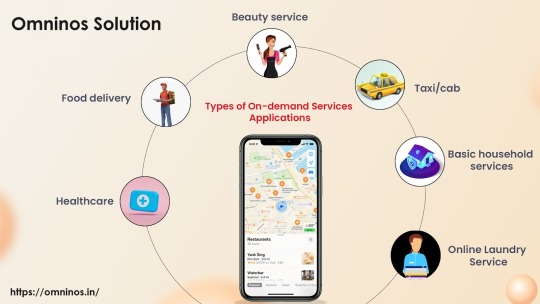
App Includes:
Android app
Ios app
Admin panel
Source code
Patent rights
Code ownership
1-3 months support and maintenance
Customisations
Payment gateway integration
Api integration
End to end deployment
Payment gateway integration
UI UX designing
Server migration
Unrestricted code
How Script Help us in Creating the App
Feature Prioritization: The script outlines a wide range of features that users expect from an on-demand service app. Developers can use this information to prioritize features based on their importance and relevance to the target audience. Features such as reliability, user-friendly interface, robust security, and responsive customer support should be given top priority during the development process.
User Experience Design: The script emphasizes the importance of exceptional user experience design, including intuitive interfaces, smooth navigation, and responsive customer support. Developers can use this guidance to design user interfaces that are easy to use, visually appealing, and optimized for various devices and screen sizes. Incorporating user feedback mechanisms and iterative testing can further enhance the overall user experience.
Integration of Advanced Technologies: Renowned companies often leverage advanced technologies such as real-time tracking, predictive analytics, and machine learning to enhance their on-demand service apps. Developers can explore integrating these technologies into their apps to provide innovative features such as personalized recommendations, dynamic pricing, and predictive scheduling, thereby offering users a more tailored and efficient experience.
Data Privacy and Security: The script highlights the importance of implementing robust data privacy and security measures to protect user information and transactions. Developers should prioritize data encryption, secure authentication protocols, and compliance with relevant regulations such as GDPR or CCPA. Conducting regular security audits and staying updated on emerging threats can help mitigate risks and build trust with users.
Scalability and Global Reach: Renowned companies often operate on a global scale, requiring their on-demand service apps to be scalable and adaptable to diverse markets and regions. Developers should design the app architecture with scalability in mind, leveraging cloud-based infrastructure and scalable technologies to accommodate growth and fluctuations in user demand. Localization features such as language support and regional customization can further enhance the app's global reach.
Continuous Improvement and Feedback Loop: The script emphasizes the importance of continuous improvement and user feedback in app development. Developers should establish feedback mechanisms within the app to solicit user input, analyze usage data, and identify areas for enhancement. Iterative development cycles, agile methodologies, and A/B testing can help refine features, address user pain points, and keep the app competitive in the evolving market landscape.
Corporate Reputation and Brand Recognition: Developers can leverage the reputation and brand recognition of renowned companies to enhance the credibility and trustworthiness of the on-demand service app. Incorporating branding elements, such as logos, color schemes, and messaging, can create a cohesive brand identity and strengthen user loyalty. Collaborating with corporate partners and leveraging their resources can also facilitate app promotion and user acquisition.
Cross-Platform Development: Based on the features outlined in the script, developers can strategize and implement a cross-platform development approach. Utilizing frameworks such as React Native or Flutter allows the app to be built for multiple platforms (iOS, Android) simultaneously, reducing development time and ensuring a consistent user experience across different devices.
API Integration and Third-Party Services: The script mentions the importance of integrating with third-party services for added functionality and convenience. Developers can identify relevant APIs and services to integrate into the app, such as payment gateways, mapping services, or communication tools. This integration enhances the app's capabilities and provides users with seamless access to additional services.
Agile Development Methodologies: Following agile development methodologies, such as Scrum or Kanban, aligns with the iterative approach recommended in the script. By breaking down the development process into smaller, manageable sprints, developers can continuously deliver incremental updates and improvements to the app. This iterative approach fosters flexibility, collaboration, and rapid adaptation to changing requirements or user feedback.
User Testing and Feedback Incorporation: The script highlights the importance of user feedback in refining the app's features and user experience. Developers can conduct extensive user testing throughout the development process, soliciting feedback from target users and incorporating their suggestions into subsequent iterations. This user-centric approach ensures that the app meets user needs and preferences effectively.
Performance Optimization and Load Testing: With scalability being a key consideration, developers should focus on performance optimization and load testing to ensure that the app can handle increased traffic and usage. Techniques such as code optimization, caching, and server scaling can help improve the app's responsiveness and reliability, especially during peak demand periods. Conducting thorough load testing simulates real-world usage scenarios and identifies potential bottlenecks or performance issues early in the development process.
Compliance with Regulatory Standards: Given the emphasis on data privacy and security, developers must ensure that the app complies with relevant regulatory standards and industry best practices. This includes implementing measures such as encryption, data anonymization, and secure authentication mechanisms to protect user data. Conducting regular security audits and staying updated on legal requirements helps mitigate risks and ensures compliance with regulations such as GDPR, HIPAA, or PCI DSS.
Documentation and Knowledge Sharing: Throughout the development process, developers should maintain comprehensive documentation to capture design decisions, technical specifications, and implementation details. This documentation serves as a valuable resource for team members, facilitates knowledge sharing, and streamlines future maintenance and updates to the app. Additionally, sharing knowledge within the development team through code reviews, pair programming, and knowledge-sharing sessions fosters collaboration and skill development.
Ethical Design and Responsible Technology Use: In line with ethical design principles, developers should prioritize responsible technology use and consider the broader societal impact of the app. This includes addressing issues such as algorithmic bias, data privacy concerns, and digital well-being. Implementing features such as consent management tools, transparency in data usage, and time management features promotes ethical design practices and cultivates trust and goodwill among users.

App Revenue Models
User Acquisition Costs (UAC): Factor in the cost associated with acquiring new users through marketing and advertising efforts. Let's assume an average UAC of Rs. 100 per user.
Retention and Churn Rate: Estimate user retention and churn rate. Assume a 20% churn rate, meaning 20% of users stop using the app each year.
Subscription Model: Offer premium features or a subscription-based model for users who want access to exclusive content or additional functionality. Let's assume 5% of users opt for a monthly subscription priced at Rs. 100 per month.
In-App Purchases: Offer users the option to purchase virtual goods, upgrades, or additional services within the app. Estimate an average of Rs. 50 per user per year in in-app purchases.
Advertising Revenue: Generate revenue through in-app advertisements. Assume an average revenue of Rs. 0.20 per impression with 100,000 impressions per month.
First Year:
Total Transactions in First Year: Rs. 25,00,000 (as calculated previously).
Commission Revenue: Rs. 5,00,000.
Subscription Revenue: Rs. 100 * 12 months * 5% * 1200 users = Rs. 72,000.
In-App Purchase Revenue: Rs. 50 * 1200 = Rs. 60,000.
Advertising Revenue: Rs. 0.20 * 100,000 impressions * 12 months = Rs. 2,40,000.
Second Year
Total Transactions in Second Year: Rs. 55,00,000 (as calculated previously).
Commission Revenue: Rs. 8,25,000.
Subscription Revenue: Rs. 100 * 12 months * 5% * 1440 users = Rs. 86,400.
In-App Purchase Revenue: Rs. 50 * 1440 = Rs. 72,000.
Advertising Revenue: Rs. 0.20 * 100,000 impressions * 12 months = Rs. 2,40,000.
Live Demo in On-Demand Services
Website | Contact | Email: [email protected]
Real-time Interaction: Live demos in on-demand services allow potential users to interact with the platform in real-time. This could involve simulating the user experience of placing an order, tracking a delivery, or accessing a service, providing a firsthand understanding of how the platform works.
Demonstration of Key Features: Live demos offer an opportunity to showcase the key features and functionalities of the on-demand service platform. This might include demonstrating the user interface, customization options, payment integration, tracking capabilities, and any unique features that differentiate the platform from competitors.
Interactive Q&A Sessions: Live demos often include interactive Q&A sessions where participants can ask questions and seek clarification about the platform's features, pricing, policies, and more. This direct engagement helps potential users gain deeper insights and address any concerns they may have.
Personalized Guidance: During live demos, presenters can provide personalized guidance and tips tailored to the specific needs and preferences of the audience. This could involve highlighting relevant services, demonstrating workflow optimizations, or suggesting best practices for using the platform effectively.
Hands-on Experience: Live demos offer a hands-on experience that allows participants to explore the platform's functionality in a controlled environment. Users can navigate through different sections, test out various features, and familiarize themselves with the platform's interface and navigation.
Instant Feedback and Iteration: Live demos enable presenters to gather instant feedback from participants regarding their experience with the platform. This feedback can be invaluable for identifying areas of improvement, refining the user interface, addressing usability issues, and iterating on the platform based on user preferences.
Building Trust and Confidence: By providing a live demonstration of the platform's capabilities, on-demand service providers can build trust and confidence among potential users. Seeing the platform in action instills a sense of reliability and transparency, reassuring users about the quality of service they can expect.
Customization and Tailoring: Live demos can be customized and tailored to suit the needs and interests of the audience. Presenters can focus on specific features or use cases that are most relevant to the participants, ensuring that the demo resonates with their requirements and priorities.
Accessibility and Convenience: Live demos can be conducted remotely, making them accessible and convenient for a wide audience. Participants can join from anywhere with an internet connection, eliminating the need for travel and enabling greater reach and engagement.
Follow-up and Support: Following the live demo, on-demand service providers can offer additional support and resources to help participants further explore the platform and address any lingering questions or concerns. This might include providing access to documentation, tutorial videos, or scheduling one-on-one consultations.
Conclusion
As on-demand services continue to evolve and expand into new industries and markets, it is essential for providers to prioritize customer satisfaction, sustainability, and community engagement. By staying responsive to user needs, embracing technological advancements, and maintaining high standards of service quality, on-demand platforms can continue to thrive in an increasingly competitive landscape.
#TaskRabbit Clone#TaskRabbit Clone UI#TaskRabbit Clone UX#TaskRabbit Clone php#TaskRabbit Clone software#push notification#TaskRabbit Clone app#TaskRabbit script app#On-Demand Services#App Development#Mobile Apps#Service Marketplace#Digital Innovation#Platform Economy#Service Delivery#Customer Satisfaction#Emerging Technologies#Entrepreneurship#Digital Transformation#Customer Engagement#App Marketing#Tech Startups
1 note
·
View note
Text
AI in Manufacturing: Definition, Use Cases and Examples
AI development service
AI/ML development solutions
Chatbot development company
AI agent development service
Mobile app development service
#AI development service#ai in agriculture#ai in farming#ai/ml#artificial intelligence#AI/ML solutions#custom app developmennt service#on demand development solutions#custom software development#mobile app development service#mobile app development company#hire dedicated developers#hire saas developer#app development company#android app development#ios app development services#ios app development trends#app developing company#hire saas developers
1 note
·
View note
Text
#Build Home Service App Like Home Depot#Build Home Depot Clone App#Custom App Development Services#Home Depot App Development Cost#Home Service App Development Cost#On-Demand Home Service App#Features of Home Service App#Cost of Develop On-Demand Home Service App#eCommerce App Development Company
0 notes
Text
Best Food Ordering App Development Company: On-Demand Delivery Solutions
Looking for the best food ordering app development company? Look no further! Our expert team specializes in on-demand food delivery app development. Based in India, we're dedicated to delivering top-notch services according to your needs. Whether you're a startup or an established business, our team ensures your app stands out with advanced features and seamless user experience. Partner with us, the best food delivery app developer in India, to take your business to new heights! Contact us today to get started: [email protected]
Visit: www.protonshub.com/industry/food
#Food Ordering App Development Company#on-demand food delivery app development#best food delivery app development company#food delivery app developer in India#app development company#software development company#mobile app development#web development services#web development#web design company#custom software development
1 note
·
View note